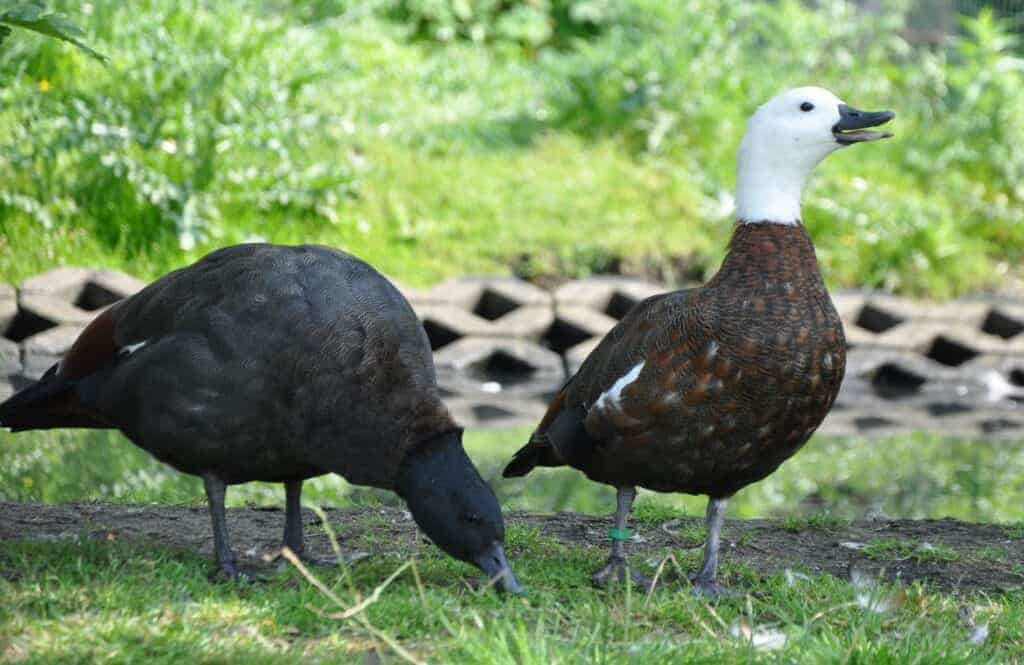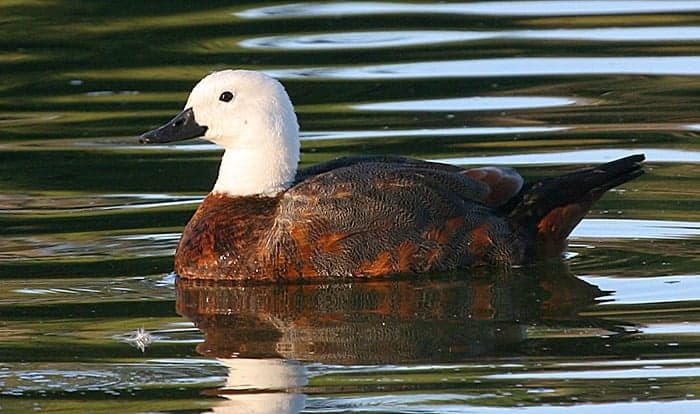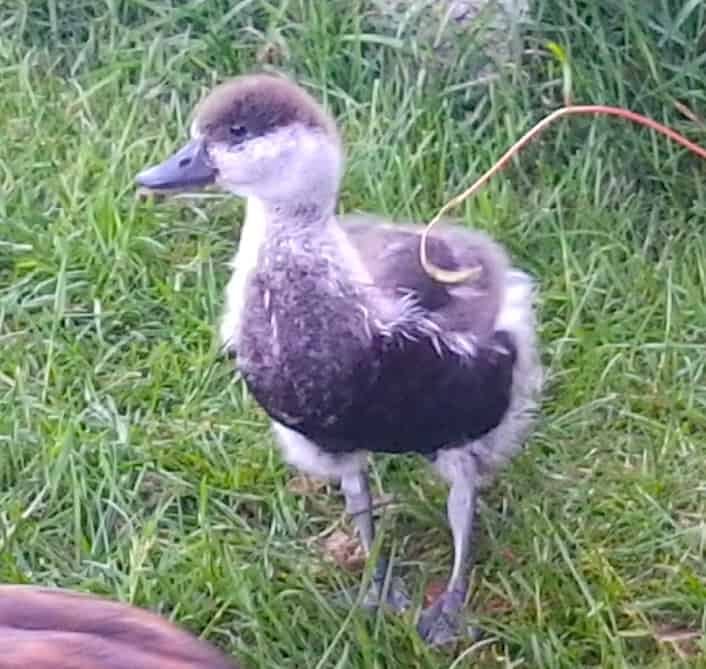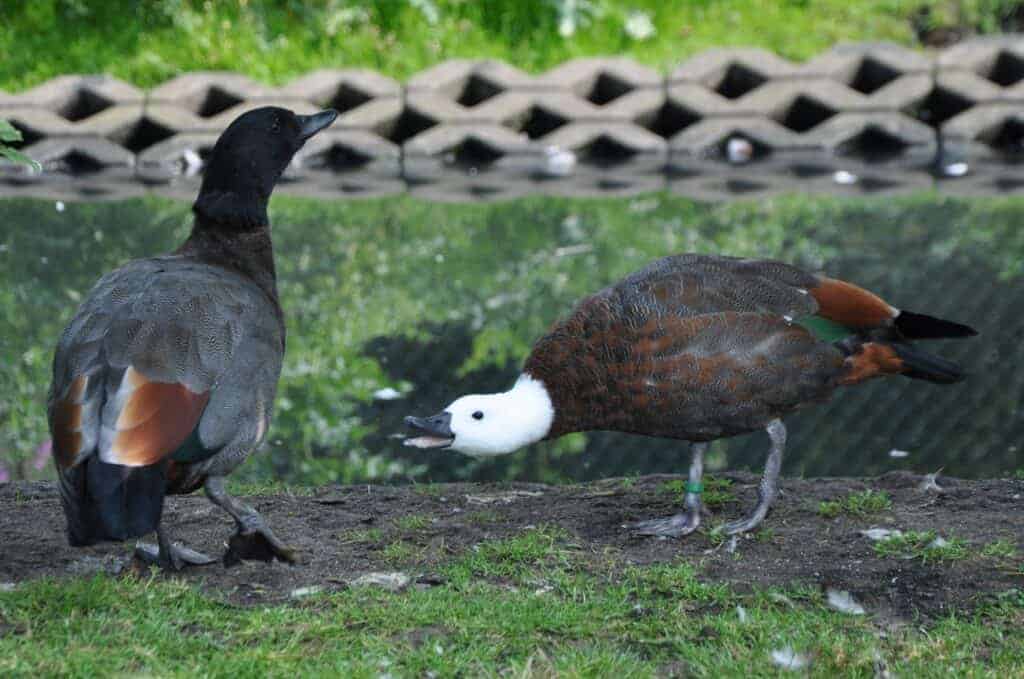Paradise Shelduck


Like all the shelducks, the Paradise Shelduck can be extremely pugnacious, and in captivity they require a lot of space. They are prone to attack, or even kill, any ducks that inadvertently invade their territory.

Tadorna variegata
Most native New Zealand birds suffered as a result of white colonisation of the islands in the 19th century. The endemic Paradise Shelduck was the exception, for it benefitted from clearing of the native bush that increased the available habitat, especially when new lakes and dams were constructed. Adaptable birds, they can be found on any wetland from coastal bays to mountain rivers, while they are particularly numerous on the tussock flats of upland South Island. Though they occur on North Island, they are absent from the north.

Paradise Shelduck are impossible to overlook, for they are among the noisiest of all the wildfowl. Pairs call in duet when alarmed, at other times they chatter to each other incessantly. They display striking sexual dimorphism: the drake is predominately sooty-black, the duck a rich chestnut, contrasting with a white head. She is unique among ducks in having an eclipse plumage, when her chestnut plumage becomes finely vermiculated with black, but she retains the white head in all plumages. In flight, both sexes show flashy white forewings.
The Paradise Shelduck will lay her clutch of around eight eggs in cavities or deep in tussock grass, but will adopt nest boxes in captivity. The ducklings hatch after 30 days. Though long-established in captivity, they are not always easy to breed.
Share this page